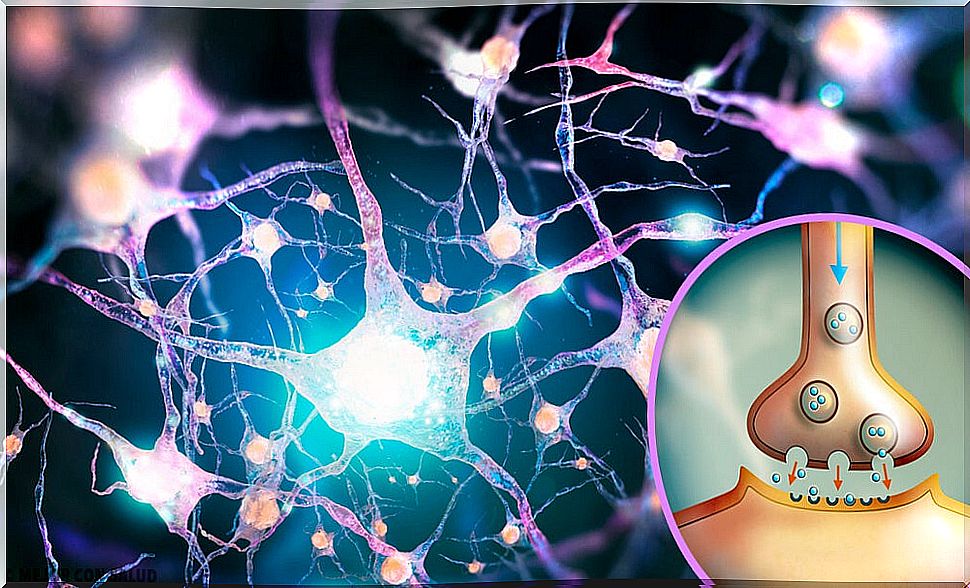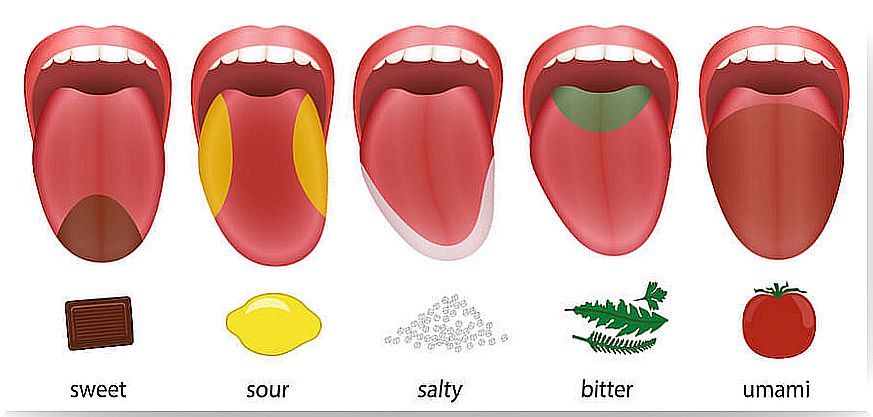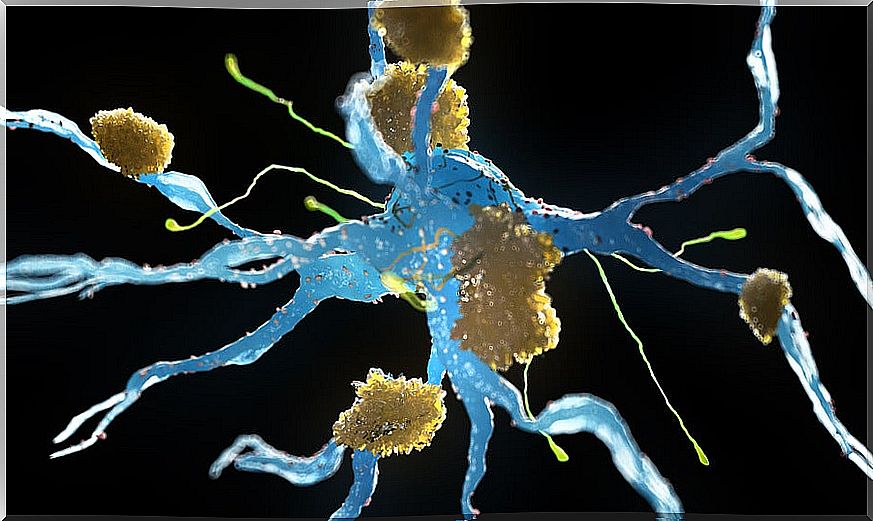Glutamate: The Excitatory Neurotransmitter Par Excellence
Glutamate is a neurotransmitter. It has inhibitory functions on the nervous system. You want to know more? Keep reading!

Glutamate is the main excitatory neurotransmitter in the central nervous system, released by both neurons and glial cells. Glutamatergic pathways are involved in neuronal plasticity, memory and learning, as well as other complex functions.
Its receptor system is very complex, as there are two different types that differ in their mechanism of action. On the one hand, the fast receptors, called ionotropic, whose mechanism is based on ion channels. On the other hand, metabotropic receptors, whose mechanism uses G proteins.
Alterations in this system are suspected to be responsible for some neurodegenerative and neurotoxic disorders. In addition to being the main neurotransmitter in the brain, glutamate is also involved in the sense of taste, in the maintenance of intestinal cells, and in the metabolism of liver cells.
The umami flavor
The receptors for the different flavors reside in the taste buds of the tongue. Until relatively recently, the basic flavors were sweet, salty, bitter, and sour.
However, a fifth flavor associated with glutamate has recently been described: the umami flavor. This name was given to the characteristic flavor of the broth, which could not be associated with any of the others.

Monosodium glutamate
Monosodium glutamate is a salt derived from glutamate. This is used as an additive in many foods, in order to give them a tastier and more pleasant flavor.
It is a substance surrounded by controversy and subject to constant evaluation. This is due to its addictive nature, which is why its use in food is limited.
Glutamate as a neurotransmitter
Next, we will see more about glutamate as a neurotransmitter, step by step.
What do you mean is “exciting”?
Its role as an exciter of the nervous system refers to its role as a “switch” of the different pathways. Thus, the cells that synthesize and release it are associated with other neural pathways with different functions.
When the glutamatergic neuron releases its neurotransmitter, it sends a turn-on signal to the associated pathways. In this way, the track is activated by this signal and the electrical impulse is transmitted between them.
Glutamate plays the antagonistic role to GABA, the main inhibitor of the central nervous system. This behaves identically, but acts as an off switch for the tracks.
Glutamate receptors
Glutamate receptors are molecules to which neurotransmitter molecules specifically bind. This correspondence is similar to that of a key and its padlock. In this way, only glutamate molecules and those that are structurally similar can bind to them.
Once the union occurs, a series of processes are triggered inside the cell. The end result is the production and transmission of the electrical impulse from one neuron to another. Based on these processes triggered inside the cell, we speak of two different types of receptor:
- Receptors associated with ion channels. When glutamate binds to these receptors, it opens a gate that allows certain ions to pass through. In addition, the ionic flow modifies the electrical charge of the cell. This change is responsible for transmitting the electrical impulse from one neuron to another.
- Receptors associated with G proteins. In these cases, when the glutamate molecule binds to its receptor, a complex game of activation and deactivation of molecules is triggered within cells. The end result of this biochemical cascade of reactions allows the transmission of the electrical impulse.
Glutamate and toxicity

An excessive release of glutamate has been shown to be related to the death of neurons. In addition, studies have shown how blocking the glutamate pathway with different drugs seems to improve some neurological pathologies.
Some of these pathologies with which glutamate toxicity has been linked are:
- Ictus.
- Epilepsy.
- Alzheimer’s.
- Parkinson’s disease.
- Huntington’s disease.
This opens an important avenue of investigation when it comes to addressing certain pathologies. The latest evidence points towards the development of new neuroprotective drugs.









